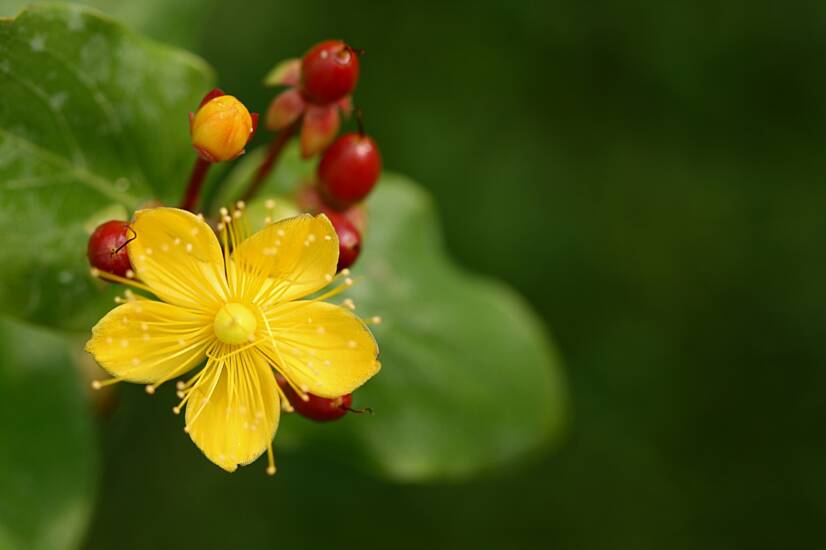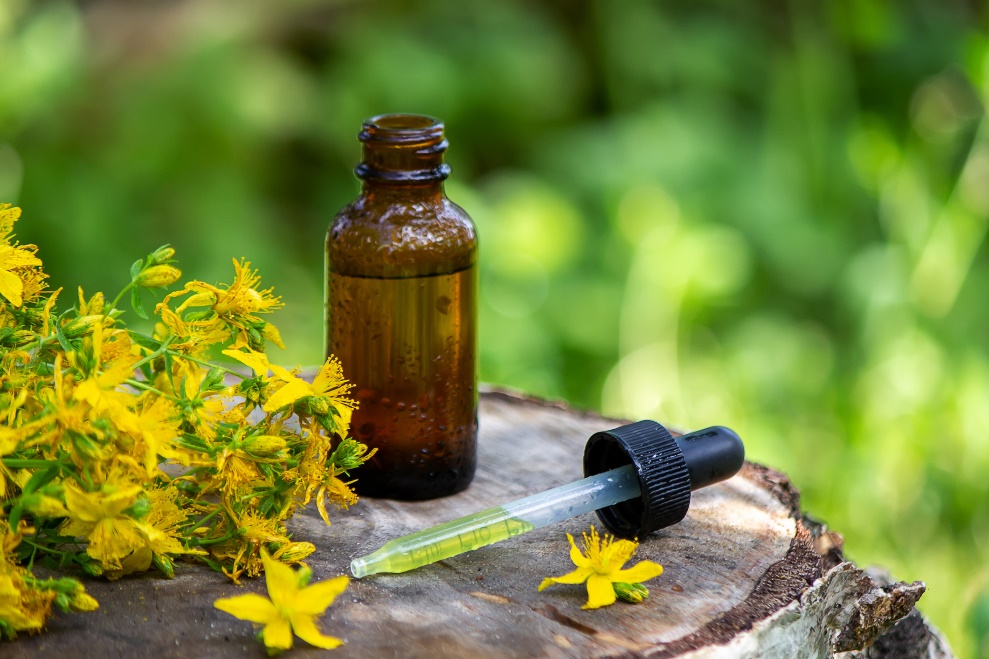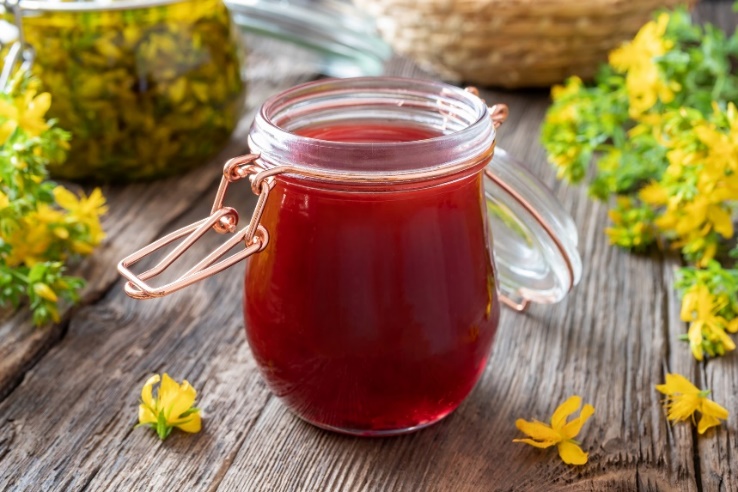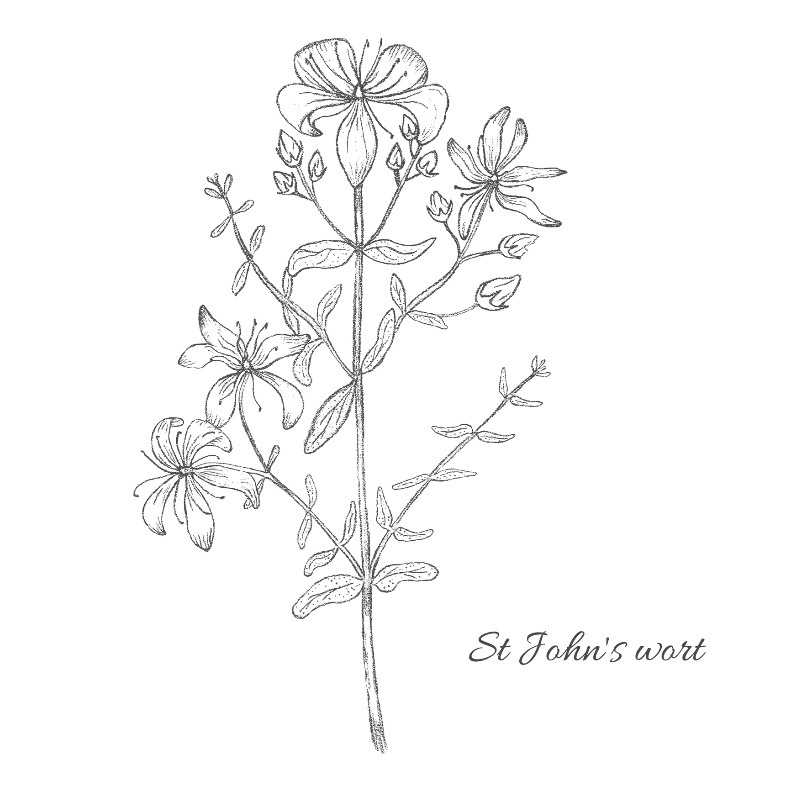- Marie Trebenová - Health from God's Pharmacy
- mayoclinic.org - Hypericum
- my.clevelandclinic.org - Hypericum
- reference.medscape.com - Hypericum
- researchgate.net - Hypericum perforatum
St. John's Wort: What is it and what are its effects? + side effects

St. John's wort is an annual plant containing the active substances hypericin and hyperforin. It has mainly antidepressant effects.
Characteristics
Hypericum perforatum or St John's wort belongs to a family of about 500 species of plants. Some of them are cultivated for their attractive flowers. The leaves of the plant have black dots on the underside.
The flowers usually grow with five petals. They are typical in that they have many stamens. The fruits are dry capsules.
Another species in this family is Hypericum calycinum, nicknamed the 'Rose of Sharon'. H. hypericoides, nicknamed 'St. Andrew's Cross', is grown as an ornamental shrub for its yellow flowers.
The active ingredients have the following effects:
- antidepressant - improves mood
- antiseptic - against germs
- anti-inflammatory - anti-inflammatory
- expectorant - improves expectoration
- immunomodulatory - tones the immune system
Hypericum perforatum is not only in recent years quite a sought-after plant for its effects. It can be purchased in the pharmacy, most often in the form of capsules, tablets, liquid extracts, ointments or oil.
History and legends
St John's wort was probably first mentioned by the Greek Pedanios Dioskourides in the 1st century AD. It was used for haematomas (bruises), skin irritations and burns.
Later on, the famous Swiss alchemist Palacelsus mentioned the use of St John's wort. He found that it needed to be sterilised by boiling. It is then useful for treating pain and anxiety.
Ancient healers and herbalists usually used this plant to treat injuries and infections. They reported its calming effect, especially in the form of oil, to be very important.
The oil was absorbed through the skin. However, it was also used in the form of a decoction, which was administered orally.
Later, the Crusaders brought the plant with them as effective against witches and their spells. They also used ointments made from the flowers and leaves to treat battle wounds.
Knights in the 12th century used a poultice of the St. John's plant for bleeding and also to treat wounds. During this period, a decoction of the plant was used for demon possession (or inhaled).

In the past, the believing people gave the balm of the blood-red flowers a name related to the blood and wounds of the Saviour, i.e. the oil of John.
"As the disciple whom the Lord dearly loved stood prostrate at the foot of the cross, he obediently gathered the plants sprinkled with the holy blood to later distribute to the devout faithful as a precious memorial of the Savior's death."
The fresh juice of this herb is red in colour, and thus reminds us of the Saviour's blood. On the Feast of St. John, the St. John's wort bursts into bloom.
In ancient times, maidens used to make wreaths from this plant. Anyone who wanted to dance around the St John's fire had to wear this wreath on their head. It is also called the St John's crown. When a maiden threw the branches into the river and when the flowers bloomed again, she was to have a groom the following year.
In the Middle Ages, the plant shaped many typical rituals, especially related to the Feast of St. John. People hung the plant over the doors of houses and churches, believing it would protect them from witches and dark forces.
People also put sprigs in their pillows. They believed that the Savior would come to St. John in a dream, give them a blessing and keep them alive for a long time. Sometimes they were used as a talisman in a prayer book or in the Bible.
In Upper Austria, a piece of St. John's wort between two loaves of bread was believed to protect cattle from disease.
Internal use
It is used for nerve injuries and nervous disorders, but also for muscular disorders from congestion, etc. It is also good for trigeminal neuralgia and diarrhea.
The tincture - also called 'arnica for nerves' - is useful for nerve pain, nerve damage, nerve inflammation, but also for insomnia and depression.
External use
St. John's wort poultice is used for wounds, bleeding and minor abrasions.
Only the flowers are collected for the oil. The flowers, collected during the day in the sun, are placed loosely in a bottle and covered with olive oil, they must be immersed in the oil. This sealed container should then be placed in the sun or in a warm place for a few weeks.
After this preparation, the oil is filtered through a cloth and the residue squeezed out. It is recommended to keep it in dark bottles.
It is good for open wounds, blood sprains, relieving inflammation and pain, and for back pain. It can be easily rubbed into the skin.
It is also beneficial for rough facial skin, burns, swollen lymph nodes, sciatica or rheumatism.
It can be used topically to treat trigeminal nerve pain. It is also excellent on sunburned skin to relieve the effects of sunburn. Infants will quickly calm down when rubbed on a sore tummy.

Harvesting and storage
It flowers from July to September, when it is also harvested.
The plant is of great importance in herbalism and medicine. The herb is 25-60 cm tall. It produces golden-yellow flowers that grow from branched stems. When the open flower is crushed, red juice oozes out.
It is stored in closed dark glass or tin containers in dry or oil form.
Hypericum perforatum helps women to regulate their menstrual cycle. In adolescent girls, St. John's wort is good for the favorable development of female genital organs.
The plant contains substances like hypericin, pseudohypericin and hyperforin.
It is used in the treatment of depression, menopausal symptoms and nervous disorders.
Safety and side effects
The preparation should be taken for a maximum of twelve weeks.
Side effects include:
- Agitation
- anxiety
- dizziness
- dry mouth
- insomnia
- headache
- sensitivity to sunlight (photosensitivity)
- allergic reaction
Patients should consult a physician before taking St. John's wort preparations if they are taking any of the following groups of medications: sedatives, antidepressants, chemotherapeutic agents, immunosuppressants, anticonvulsants, antipsychotics.

St. John's wort may also interact with alcohol, aspirin, digoxin, warfarin.
Taking the extract is not recommended when frequent sun exposure (increases hypersensitivity to the sun).
Therefore, it is necessary to avoid being in the sun, protect yourself by using sunglasses and clothing with long sleeves.
Of course, therapeutic light or tanning beds should also be avoided.
St. John's wort products are not suitable for children.
Extracts from the plant can cause spontaneous abortion, so its use in pregnancy is not recommended.










